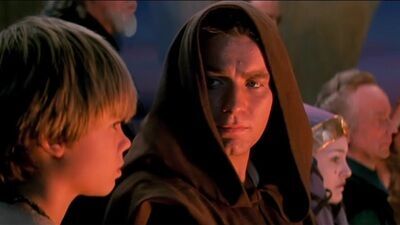This Friday, “Star Wars: Episode I – The Phantom Menace” returns to theaters to celebrate its 25th anniversary. Some might wonder what’s there to celebrate—the film was a blockbuster but, on a creative level, wretched—but even its loudest detractors have to acknowledge that “The Phantom Menace” profoundly changed Hollywood. Lucas, who wrote (or co-wrote) and directed each of the prequels, saw the importance of extending valuable intellectual property into the next generation—and also that the then-nascent CGI would be the future of event movies. But by popularizing prequels—and the notion of the origin story as a viable commercial endeavor—he perhaps made his greatest impact on studio filmmaking in the 21st century, giving studios a fresh way to exploit their most enduring characters. And he did it by creating an irresistible question that lured audiences to the multiplex: How did Darth Vader end up that way?
Lucas didn’t invent the idea of the prequel or the origin story. “The Godfather Part II” showed us a young Vito Corleone, and “Young Sherlock Holmes” presented the ingenious detective as a lad. Back in the 1980s, Lucas had toyed with the idea of the prequel when he conceived the idea for “Indiana Jones and the Temple of Doom,” which took place shortly before “Raiders of the Lost Ark.” (Plus, “Indiana Jones and the Last Crusade” and “The Young Indiana Jones Chronicles” explored what teen Indy was like.) But “The Phantom Menace” and the prequel trilogy were different: No one had so grandly conceived a narrative built around showing us the “before” of a saga we’d loved. In fact, Lucas felt that it filled in some important chapters to his franchise.
“It’s the missing link,” Lucas said in 2005 when the prequel series’ final installment, “Star Wars, Episode III – Revenge of the Sith,” was about to come out. “Once it’s there, it’s a complete work, and I’m proud of that. I do see it, tonality-wise, as two trilogies. But they do, together, form one epic of fathers and sons.”
The striking teaser poster for “The Phantom Menace” suggested the prequels’ dramatic potential. It featured Jake Lloyd as an adolescent Anakin Skywalker, his head turned downward solemnly, and we observed the shadow he cast on the wall behind him—that of the alarming silhouette of Darth Vader. It was a simple, brilliant way to communicate this new trilogy’s conceptual hook: Anakin doesn’t know it yet, but this innocent child will become the galaxy’s most feared Jedi. Who wouldn’t want to learn what inspired that terrible transformation?

